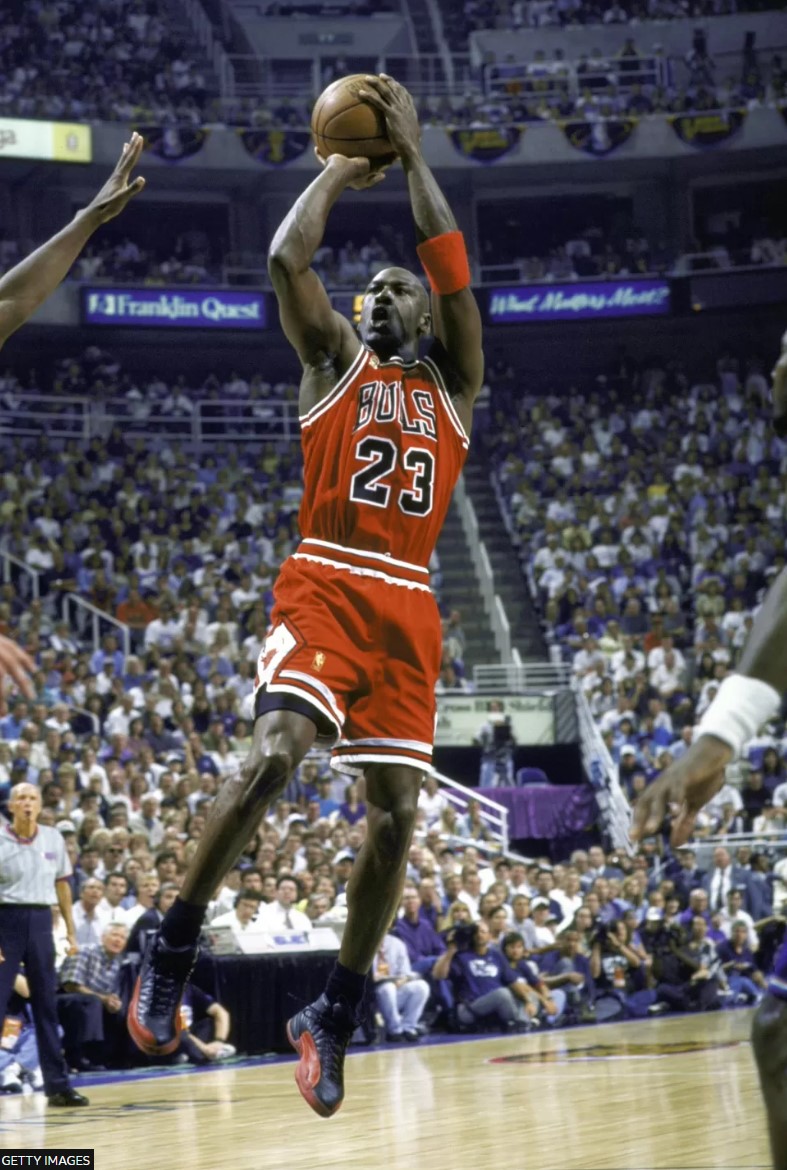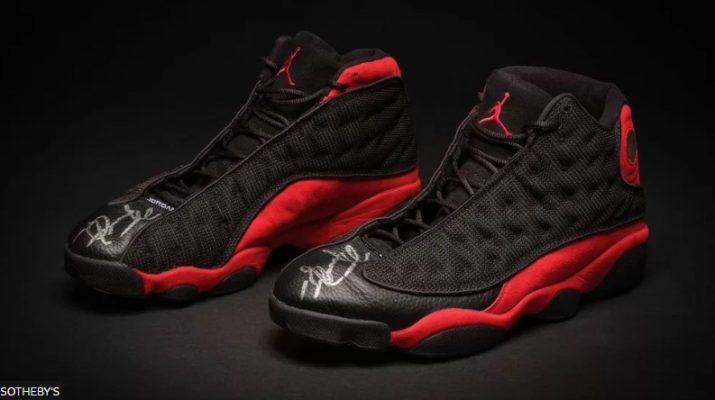A pair of Air Jordan XIIIs worn by Michael Jordan during the 1998 NBA Finals is expected to sell for as much as $4m. Sotheby’s.
Bidding on the Air Jordan XIIIs hit $1.8m just a few hours after the auction opened.
That is well past the current record of $1.47m for a pair of Jordan’s Nike Air Ships auctioned in 2021.
Some estimates say the sneakers may go for as much as $4m by the end of bidding on 11 April.
The basketball star wore the Air Jordan XIIIs during his last championship season with the Chicago Bulls in 1997-1998.
Jordan was wearing the shoes when he scored 37 points in Game 2 of the 1998 NBA Finals series, carrying the Bulls to a 93-88 victory over the Utah Jazz.

Getty Images
The Bulls went on to win the championship, a story told by the 2020 documentary series “Last Dance” about the megastar’s last season with the team.
It was Jordan’s sixth NBA championships and the fifth time he’d be named the NBA’s Most Valuable Player.
Right after the Game 2 victory, Jordan gave the shoes to a ball boy in the locker room as thanks for finding a lost jacket, Sotheby’s auction house says.
The “Bred” Air Jordans – short for “black and red” – are the only complete pair of sneakers worn by Jordan in an NBA Finals game to be authenticated, Sotheby’s said.
Jordan wore the first Air Jordan shoe in 1984 during his rookie season with the Chicago Bulls. The Air Jordan I became available to the general public the following year. To date, more than 30 different models of the Air Jordan have been made.
Last year, Jordan’s Game 1 jersey – another 1998 NBA series relic – sold for $10.1m, making it the most expensive piece of worn sports memorabilia to ever sell at auction.
Jordan has won a total of six NBA Finals championships, two Olympic Gold Medals and numerous other accolades. He is largely considered to be one of the greatest athletes of all time.
This article was first published on BBC.


